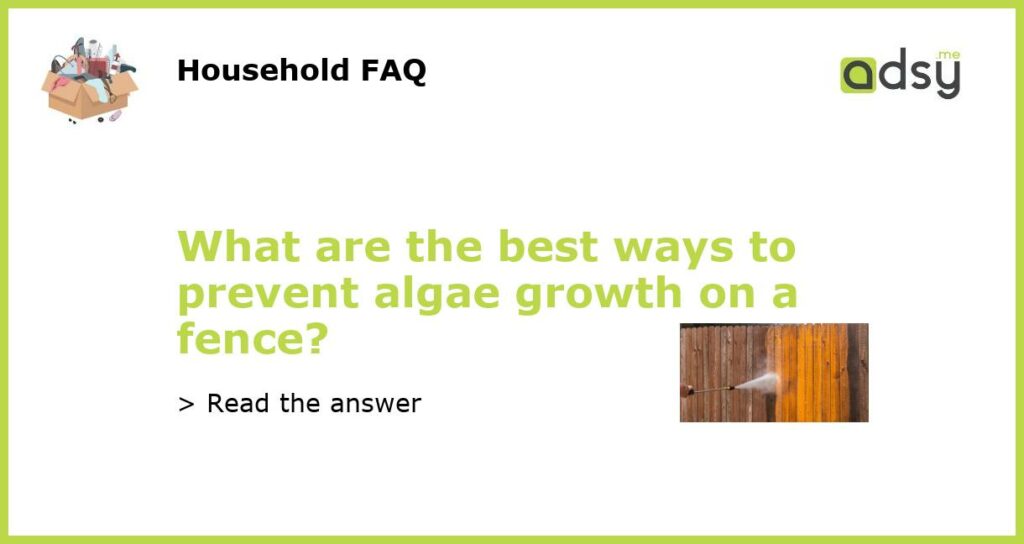Regular cleaning and maintenance
One of the best ways to prevent algae growth on a fence is by regularly cleaning and maintaining it. Algae thrives in damp and dirty conditions, so keeping your fence clean and dry will greatly reduce the likelihood of algae growth. Start by removing any debris such as leaves, branches, or dirt that may be sitting on your fence. Then, use a solution of water and mild detergent to wash away any existing algae. Be sure to scrub the fence thoroughly using a soft brush or sponge, paying extra attention to areas where algae is most likely to grow, such as shaded or damp spots.
Pruning and trimming vegetation
Vegetation, such as trees, shrubs, and vines, can contribute to algae growth on a fence by providing shade and retaining moisture. To prevent algae growth, it is important to prune and trim the vegetation surrounding your fence regularly. Trim back any overhanging branches or vines that may be blocking sunlight and creating damp areas. This will not only help prevent algae growth but also improve the overall appearance and health of your fence.
Applying a protective coating
Another effective method to prevent algae growth on a fence is by applying a protective coating. There are various coatings available on the market that can help create a barrier on the surface of your fence, preventing algae and other forms of biological growth. These coatings often contain anti-fungal and anti-algae properties that inhibit the growth of algae. Before applying any coating, make sure to clean the fence thoroughly and follow the manufacturer’s instructions for proper application.
Improving drainage and airflow
Poor drainage and lack of airflow can contribute to algae growth on a fence. If your fence is located in an area that tends to accumulate moisture, take steps to improve drainage and increase airflow. Clear any clogged gutters or downspouts that may be causing water to collect near your fence. Additionally, consider installing vents or openings in your fence panel to allow for better airflow, reducing the opportunity for algae to grow.
Using natural remedies
If you prefer natural methods, there are several remedies that can help prevent algae growth on a fence. One popular option is vinegar, which is known for its antimicrobial properties. Mix equal parts of white vinegar and water, and use a sponge or brush to apply the solution to your fence. Vinegar will not only kill existing algae but also inhibit future growth. Another natural remedy is baking soda. Create a paste by mixing baking soda with water and apply it to the algae-affected areas. Leave the paste on for a few minutes before rinsing it off with water. Both vinegar and baking soda are safe for the environment and do not pose any harm to humans, pets, or plants.

